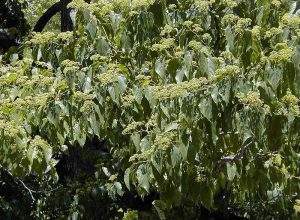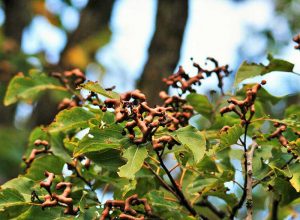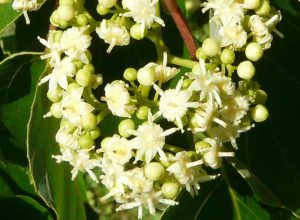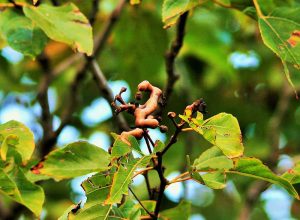Raisin Tree – Hovenia Dulcis


Belonging to the same family of the more famous Jujube tree, The Rhamnaceae,, this little known species in Italy, but very common in Central – Northern Europe and has origins the mountain areas of The Hymalayas, Japan and as far as Korea where it is mostly diffused.
The Hovenia Dulcis (Raisin Tree) is a tree which can reach a height of 10/12 metres, for perfect development it needs to be planted in a sunny isolated position with notable surrounding space. The shiny dark green leaves are deciduous and lightly veined, in the summer heat they take on violet hue; generally it has a single trunk which with the passage of time becomes very rugged and distinctive from which the branches form a beautiful sphere recalling that of the beech tree.
It flowers and fruits strongly also in semi shade where it Very resistant to intense cold and wind, mild winters can induce a vegetative reawakening which subsequently dies in the case of a return to cold.
TERRAIN
The Raisin Tree doesn’t have peculiar need non acid, loose fresh and deep soil, without any stagnant water. These are the characteristics which most plants enjoy.


FLORA AND FRUIT
When the leaves appear, between the end of Spring and the beginning of Summer, the plant is covered in numerous white flowers which bloom attached to the branches, they are small but numerous and bunched together esthetically exquisite. Considering the very late flowering period and the high content of nectar the flowers attract many bees, Hovenia Dulcis is a popular and much appreciated by beekeepers.
The flowers bloom hanging and divide in a stunning way: from one stalk, first two flowers bloom, then another two and so on, forming an untidy plait. It is actually these small flowers which in days form the edible part of the Raisin Tree, which via its consistency, flavor and even the colour reminds us of the dry sultana, indeed the raisin.
The true fruit are those small sphere shaped ones which are inedible, which grow at the top of the various branches and offshoots usually mature in August; at complete maturity the twisted stalk separates from the branch and falls to the ground and therefore is easy to harvest, otherwise difficult when the branches are high.
USE AND HEALTH PROPERTIES
It should be used exclusively fresh in fruit salads or dried as with the raisin.
Chinese traditional medicine attributed beneficial properties to these fruit confirmed today by modern technology: they are antipyretic and therefore advisable for children because of the sweet flavor, they ward off muscular and vascular spasms, and have a laxative effect. Because of a third sugar content divided in glucose, fructose and saccharine it is almost 20% protein, and particularly energetic.
PRUNING AND CULTIVATION
It is a tree which does not require intervention and care, apart from those which guarantee the plant takes well as common to all species.
